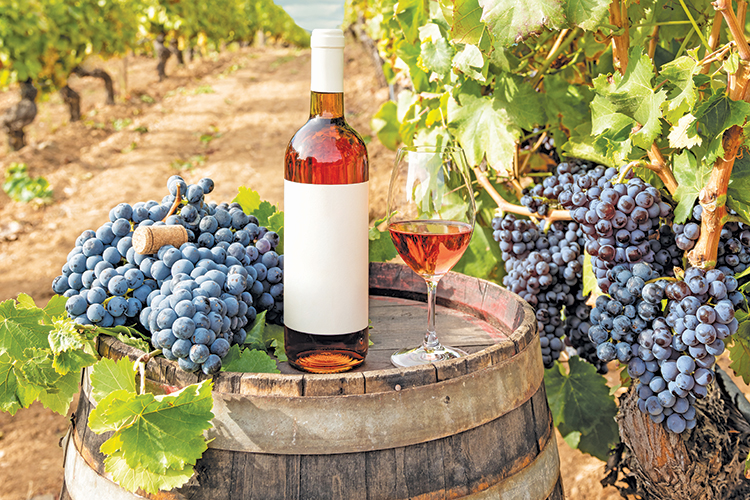
There’s a lot of talk these days about whether so-called organic wines have any health benefits. The problem is that the term “organic” is not well understood. If you see the words “Certified Organic” on a label, it means the wine has been grown and processed according to strict guidelines set out by an official agency. In the US, it’s generally the USDA. The designation means that winemakers must avoid most pesticides and fertilizers and conform to a list of environmentally friendly procedures. These promote soil health and ecological balance, and the certification assures you that the requirements were followed.
There’s another wrinkle to this designation: a classification called “Wine Made with Organic Grapes,” which means the grapes were grown according to the specs above, but the winemaking process could include non-organic ingredients, such as added sulphur.
The real question is whether there are any real benefits to enjoying organic wines, and the answer is…sort of.

First, the organic designation requires less use of synthetic chemicals in the vineyard, such as pesticides, weed killers, and fertilizers. If you’re concerned about chemicals in your food and drink, this can be reassuring.
Second, organic wines contain fewer additives and are usually produced with fewer added sulfites, though keep in mind that sulfites do occur naturally in wine.
About those additives. It’s surprising how many dedicated wine lovers are unaware of the number of substances that are legally permitted in the winemaking process. At one count, over 70 different ingredients can come in contact with the wine in your glass. Tannin powder is used to add body to wines that may be thin on the palate. Mega Purple is made from red grape skins and adds color to red wines that are too lightly colored.
Different strains of yeasts are grown in the lab and used to produce various kinds of fermentation. In the fining process, which clarifies the wine and removes dead yeast cells, gelatine or bentonite is used. Sugar and tartaric acid are allowed. Then, there are those added sulfites as preservatives.
So theoretically, from a health standpoint, organic wines contain none of these additives, and there is some evidence that they offer more antioxidants, such as resveratrol. Other studies suggest that the difference is minimal.
A recent article in “Delish” magazine quotes food scientists who maintain that organic wines made without any of those chemicals may be healthier over the long term.
Then there’s the matter of taste. Many organic enthusiasts point out that organic wines better express the soil, climate and geography of the vineyard – what the French call “terroir.” Try some and decide for yourself.
Many experts conclude that the overall benefits of organic winegrowing and production are more about sustainability and flavor than perceptible health benefits. So if your personal preference tends toward environmental awareness and protection, these wines may offer a good alternative. And of course, there are always our latest discoveries to sample.
Beringer Private Reserve Chardonnay Napa 2022 ($50) – This winery’s private reserve designation is for real. The pr wines are all elegant and highly collectible.
In this glass, you’ll discover vibrant citrus aromas, including orange and lemon, along with hints of white flowers. The flavors include lemon, pineapple, vanilla and a slight hint of pineapple. A steal at this price. Wine
Whisperer rating on a scale of 100 —
WW 94
San Simeon Pinot Noir Monterey
2022 ($30) – Ten months ageing in
French oak gives this intriguing Pinot a background of chocolate and pepper.
On the palate, there is pronounced black cherry and rich raspberry. This will age for many years. WW 93
Goldeneye Pinot Noir Anderson
Valley 2022 ($62) – Dan Duckhorn and his wife Margaret established this new label well outside their normal Napa area. Another well-aged Pinot, this sample has very characteristic cherry and dark berry flavors with notes of smoke and leather from the extended barrel aging. WW 94
Stags’ Leap Petite Sirah Napa Valley 2022 ($30) – Established in 1893, Stags’ Leap is a historic Napa winery. The Petite Sirah is blended with touches of Grenache and Syrah, imparting notes of raspberry and violet on the nose. Flavors of big red berries, like cherry and raspberry with a bit of mocha way in the back. WW 94 ¦
Jerry Greenfield The Wine Whisperer, a wine consultant, writer and educator. His two wine books, “Secrets of the Wine Whisperer” and “Ask the Wine Whisperer,” are available on Amazon.
